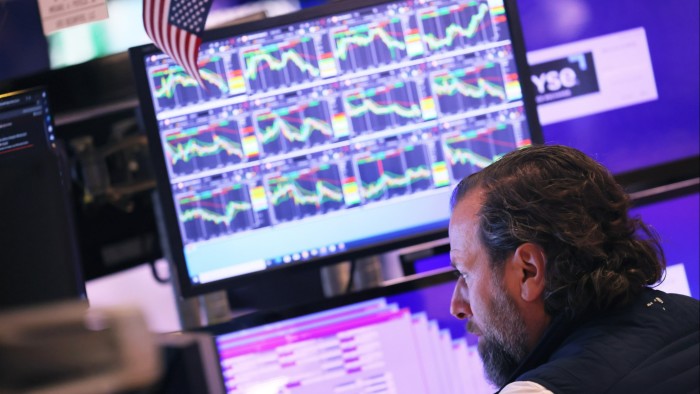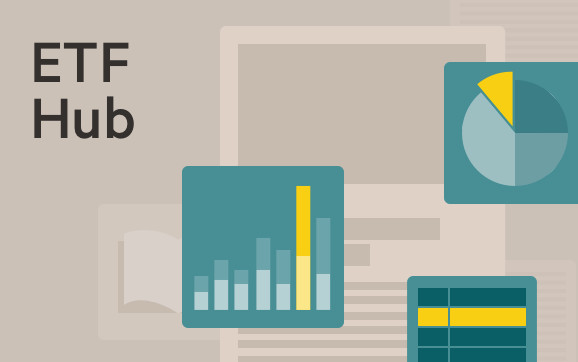High yield ETF influence on underlying bond market jumps

Simply sign up to the Exchange traded funds myFT Digest -- delivered directly to your inbox.
Latest news on ETFs
Visit our ETF Hub to find out more and to explore our in-depth data and comparison tools
The influence of some corporate bond exchange traded funds on their underlying holdings has shot up, as electronification of fixed income trading creates an upheaval in how bonds are traded.
Research by Coalition Greenwich, a data analytics company, shows the trading volumes of 12 of the largest corporate bond ETFs rose from 18 per cent of the turnover in their constituent investment grade and high-yield bonds in 2021 to 23 per cent in 2022.
However, the proportion was much more marked when Coalition Greenwich narrowed its focus to the five high-yield ETFs in its study, where it found average daily notional volume soared from 30.5 per cent of the underlying bonds in 2021 to 47.4 per cent. This essentially means the ETFs accounted for nearly half of the daily traded value of the underlying bonds.
“In the last three years everything has changed,” said Kevin McPartland, head of market structure and technology research at Coalition Greenwich, adding that all bond market participants now traded at least some of their volume electronically, which was transforming the market.

The findings are in stark contrast to the more often quoted ratio of assets under management. An iShares analysis of the ETF market published in January this year found that fixed income ETFs accounted for just 2.5 per cent of fixed income assets in the US, 1.6 per cent in Europe and 0.3 per cent in Asia-Pacific.
McPartland said that ETFs were likely to continue to play a central role for those seeking exposure to fixed income.
“Inflation and higher rates means bonds are cool again,” he pointed out, adding: “ETFs are an easy way to gain exposure to that.”
The increasing share of notional volume traded is just one indication of what market participants and trading platform providers say has been a revolution in the way many corporate bonds are traded. Fixed income exchange traded funds have helped to spur electronification of the corporate bond market resulting in better price discovery, liquidity and tighter spreads.
“ETFs are a central and catalysing force in the modernisation of the bond markets that have helped to improve transparency and reduce costs for investors,” said Brett Pybus, global co-head of iShares fixed income ETFs for BlackRock.
Fixed income ETFs, however, even if they are composed of relatively liquid instruments still include constituents that rarely trade. But because ETFs are always quoted on exchange it means that those illiquid bonds are effectively assigned values.
“If you’re trading the ETF electronically, you’re effectively pricing the underlying bond,” said Chris Concannon, chief operating officer and president of MarketAxess, an electronic trading platform.
That impact on the underlying bonds is part of what has driven the rising demand for electronic platforms.
“If you trade ETFs electronically and you’re putting your risk on electronically, you are going to want to trade the underlying bond as fast as you do the ETF, so you have high demand for electronic solutions,” said Concannon.
Latest news on ETFs

Visit the ETF Hub to find out more and to explore our in-depth data and comparison tools helping you to understand everything from performance to ESG ratings
One of clearest indications of this rise in ETF influence has been a boom in portfolio trading. This process allows thousands of bonds to be offered simultaneously in one parcel and removes the need for line-by-line trades, smoothing the risk management process for liquidity providers in the ETF market.
“The growth of fixed income ETFs is interlinked with the growth of portfolio trading,” said Adam Gould, global head of equities at Tradeweb, another electronic marketplace.
“Liquidity providers are in a better place to price bonds alongside portfolios and fixed income ETFs. The additional outlets have generally led to tighter spreads on ETFs, benefiting the end user,” Gould added.
The explosion of activity has led to a 71 per cent leap in the notional volume of fixed income ETFs traded on Tradeweb’s platform from 2021 to 2022.
The notional volume of bond portfolio trading has also seen steep rises in the past three years.
Despite broad agreement that their influence is growing, Bryan Armour, director of passive strategies research for North America at Morningstar said it would be wrong to suggest that the ETF tail was beginning to wag the bond dog.
Market makers and traders actively traded in both ETF and underlying bond markets, taking advantage of any tradeable deviation in pricing between the two, he explained, adding that according to Trace data from the Financial Industry Regulatory Authority in the US the average daily trading volume of US corporate bonds was $38.6bn in 2022 against a $7bn average daily volume for corporate bond ETFs.
“Yet, the corporate bond market dwarfs the assets under management of ETFs, $10.1tn to $185bn,” he said.
“These figures demonstrate the increasingly central role ETFs have in bond trading. But rather than dominating the market, they simply provide another source of liquidity and a better view of bond prices than opaque bond markets,” Armour said.
Comments